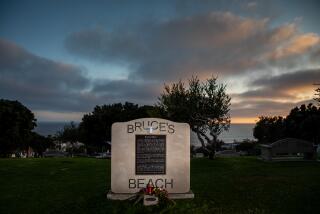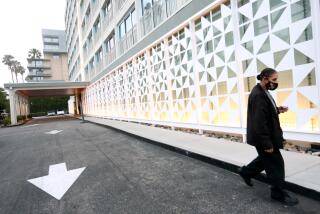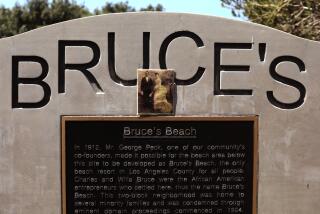Heirs fight for access to land
- Share via
In 1987, Theodore and Sylvia Kellogg received a gift from her father of a 10-acre property. Four years later, her father gave them an adjoining 32-acre parcel.
But there was one little problem. These two parcels are landlocked without access to a public road. Title research showed that in 1878 the U.S. government conveyed the first property by government land patent (similar to a deed) to F. Novella. All the surrounding property was still owned by the government. Until 1944, the property was used as a quartz mine. But there was no evidence of its access to a public road.
In 1945, when Sylvia’s parents acquired the two properties, they used a “north road” over several adjoining properties to reach a main road. But the neighbors had blocked that private driveway, creating the two landlocked parcels.
The Kelloggs, wanting to reach their landlocked parcels, brought a quiet title lawsuit against their neighbors, Ronald and Judith Garcia. They argued that an easement by necessity should be created because, at one time, all the parcels were owned by the government, and it was an oversight not to create access to the landlocked parcels.
If you were the judge, would you create an easement by necessity over the Garcias’ land so the Kelloggs could reach their landlocked parcels?
The judge said yes.
To create an easement by necessity to reach a landlocked parcel, the judge began, there must have been past common ownership with an adjoining property that abuts a public road. “Such a way is the result of the application of the presumption that whenever a party conveys property, he conveys whatever is necessary for the beneficial use of that property and retains whatever is necessary for the beneficial use of the land he still possesses,” the judge explained.
“An easement by necessity may be asserted by remote grantees in the chain of title long after the easement was created by the original common grantor, despite the failure of a prior grantee to exercise the right,” he continued. When the U.S. government granted the land patent to F. Novella in 1878, the judge emphasized, there obviously must have been access to the property because it was used as a quartz mine until 1944.
The legal theory of an easement by necessity over adjoining land that once had common ownership is there should be access to landlocked parcels, which should not remain in perpetual idleness, and it was an oversight not to provide for an easement, the judge remarked.
Because the Kellogg properties once had common U.S. government ownership with the Garcia property, whose parcel adjoins a public road, the Kelloggs are entitled to an easement by necessity to reach the landlocked parcels, the judge ruled.
*
Based on the California Court of Appeal decision in Kellogg vs. Garcia, 125 Cal.Rptr.2d 817.
More to Read
Sign up for Essential California
The most important California stories and recommendations in your inbox every morning.
You may occasionally receive promotional content from the Los Angeles Times.













